This post may contain affiliate links. Please read our disclosure policy.
The best way to cook bacon is to bake it in the oven! No splatter, no smoke, no pre-heating, and no headaches. Learn How to Cook Bacon in the Oven with my easy, mess-free method, plus how and why to save bacon fat!
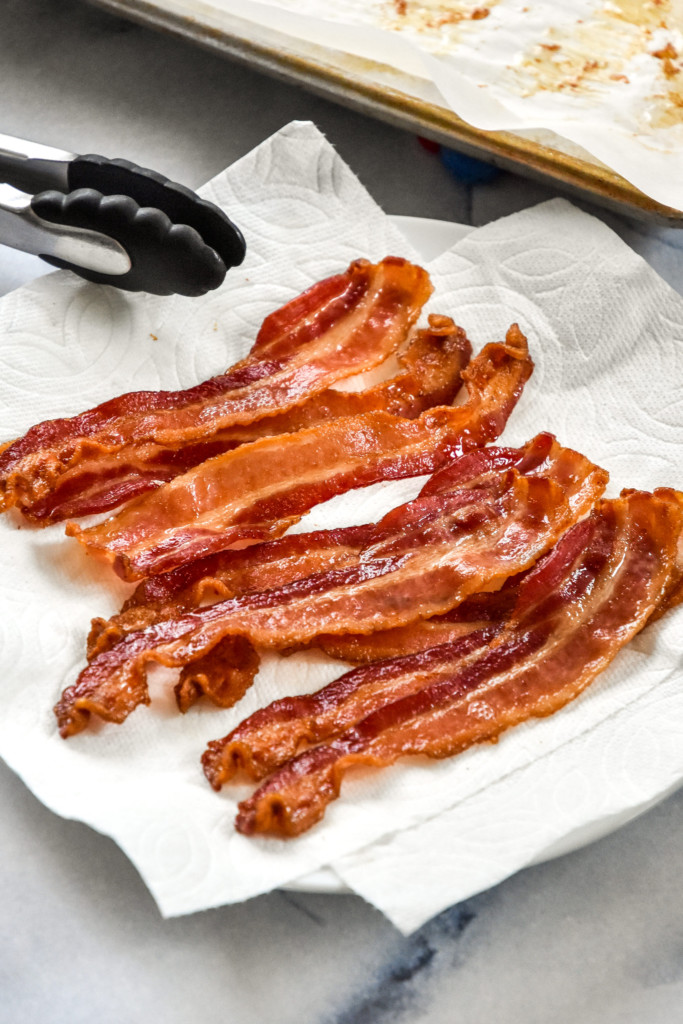
Sometimes bloggers are like, “I’ve been making this for years and I’m finally sharing”, and I’m like how have you NOT shared this yet??
Moments later, I realize I am also that person. I’ve been cooking bacon in the oven for years now. It’s the best method. And I want to show you how!
And yes, I did try cooking bacon in my air fryer. This is one of the times I found the air fryer to be limiting and a little bit more messy. My older air fryer smoked when I tried it. New air fryer could only fit like 5 or 6 strips.
And so, I deem oven baked bacon the best bacon.
Recipe Overview
Total Time: 25 minutes
Difficulty: Easy
Method: Oven Baked
Prep: Make-Ahead Friendly
Why make bacon in the oven?
Here are the reasons I think oven cooked bacon in the easiest and best bacon!
- It comes out delicious and crisp every time!
- You can make a whole package at one time! The stovetop and air fryer methods force me to cook in batches.
- Cooking bacon in the oven is a hands-free method. There is no flipping required, and it frees up the stovetop for other things.
- There are absolutely no grease splatters with this method.
- If you use parchment paper and no rack (as I recommend), cleanup is SO EASY.
- There is no smoke if you cook you bacon in the oven at the temperature I recommend.
What do you need to cook bacon in the oven?
My method for cooking bacon in the oven requires only three things, but they are all very important:
- high quality bacon – For the best tasting bacon, it’s important to use high quality bacon. This means using bacon from heritage-breed pigs (more on heritage pork here) which have permanent access open pastures and natural environments. The bacon is also uncured and free of nitrates. Most bacon from the store does container sugar, but my personal choice is to opt for bacon without, which is why I get my bacon from my ButcherBox (affiliate link!) meat delivery service.
- rimmed half sheet pan (affiliate link!) – This will measure about 18×13 inches with a 1 inch tall rim. The rim is super important because this pan is going to catch all the grease from the bacon. This pan is quite versatile and great for sheet pan dinners or baking cookies. I have a couple different ones – brand is less important if you use quality parchment paper or silicone liners.
- quality parchment paper – For this method, I recommend using a quality parchment paper. My favorite brand is the Costco Kirkland Signature Parchment Paper. Some store brands are thin and do not work as well.
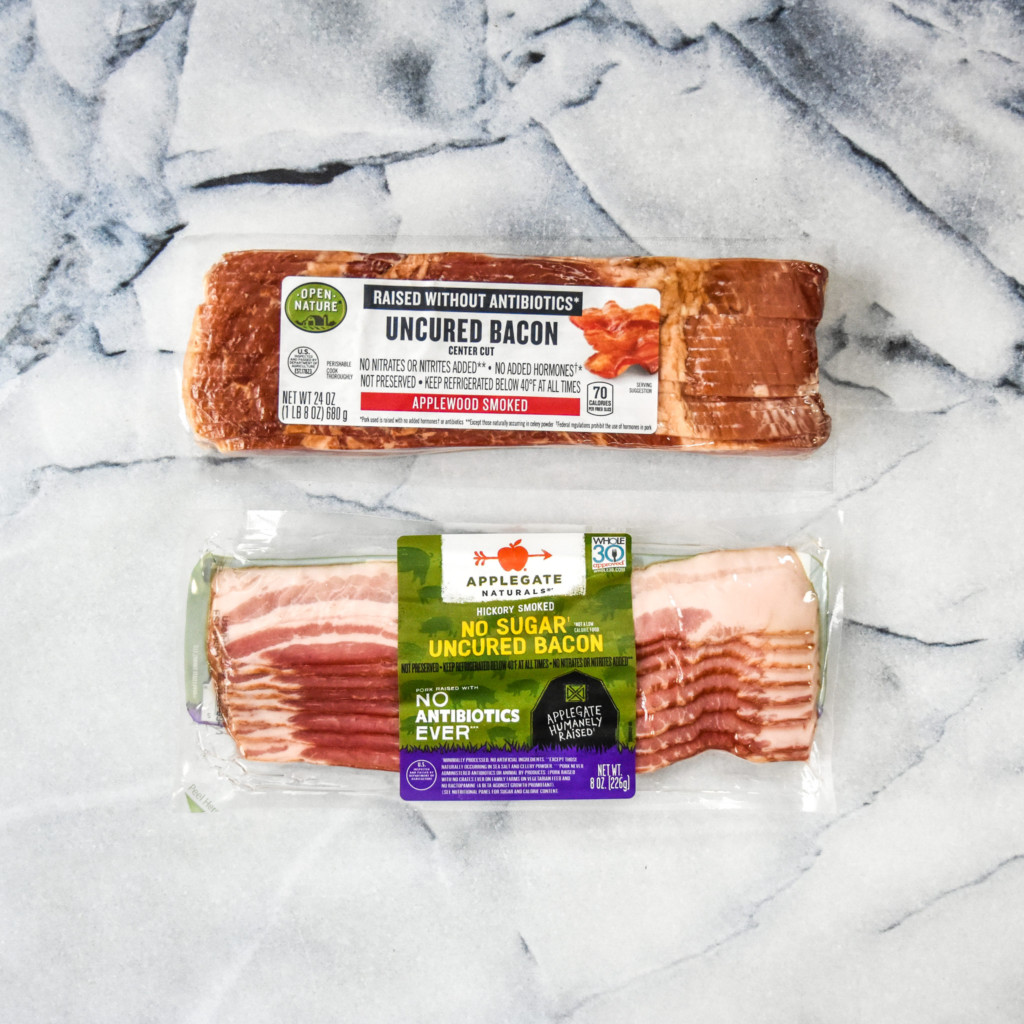
How to cook bacon in the oven:
Unlike many oven recipes, the first step is NOT preheating the oven. You’ll be putting your bacon into a cold oven!
First, figure out if your bacon is on the thicker or thinner side. This will affect the cook time.
In the photo above, the top package of bacon is thicker (slices over 1/8 of an inch thick), while the bottom package is thinner (slices under 1/8 of an inch thick).
Grab a rimmed half sheet pan (affiliate link!) and line it with parchment paper. To help with cleanup, measure your parchment paper to be slightly longer than the pan so it overhangs on all sides to contain all the bacon fat. Check my photos for an example!
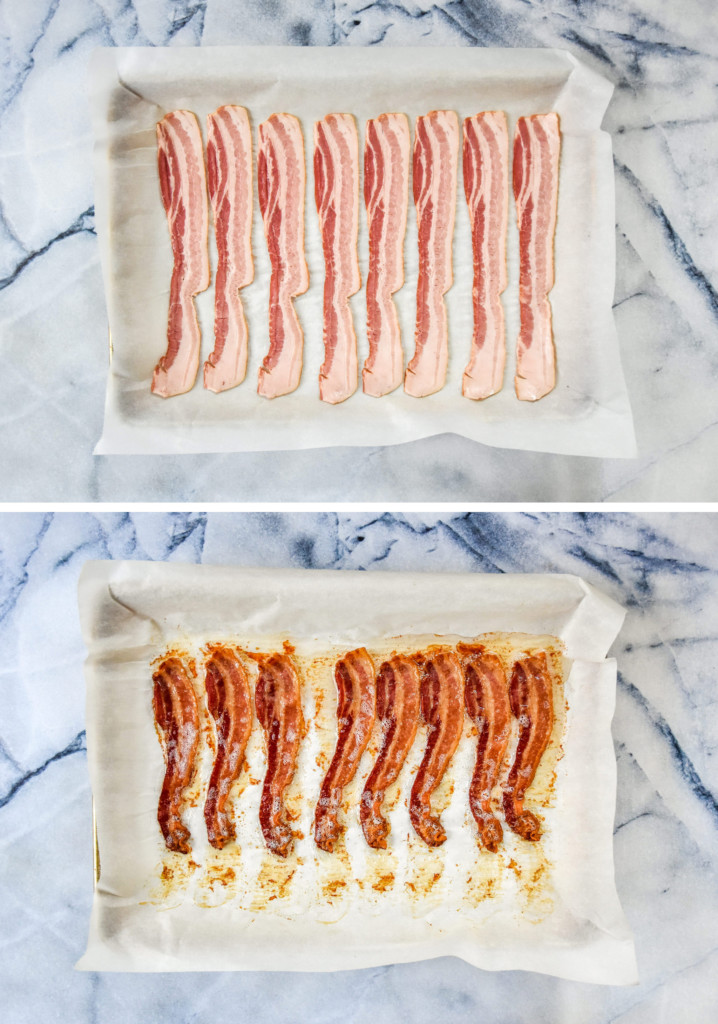
Open your package of bacon and arrange 8-10 pieces flat on the parchment paper, as pictured above. The strips can be touching, but they should not be overlapping. The bacon will shrink considerably during cooking.
Place the tray into the oven and immediately set the temperature to 375F. Set a timer for the cook time depending on the thickness of the bacon.
Thinner bacon will take about 18-23 minutes to cook starting in a cold oven. Thicker bacon will take about 24-28 minutes to cook starting in a cold oven. If you prefer crisper bacon, add another 2 minutes. Start with the minimum cook times and watch carefully from there.
Why start with a cold oven?
Placing a tray of bacon into a cold oven helps to cook the bacon more slowly and evenly compared to placing it into a hot oven.
Another bonus: You don’t have to wait for the oven to preheat!
While the bacon is in the oven, line a plate with paper towels. This will help catch and remove extra grease from the bacon.
Once the bacon in browned, sizzling, and appears crisp to your liking, carefully remove the pan from the oven.
Wait about 30 seconds for the sizzling to calm down, and then use a fork or tongs to remove the bacon from the pan and onto the paper towel-lined plate.

Use another paper towel to dab the bacon to remove additional grease – this helps the bacon crisp up nicely! The key is not to let the bacon sit in the grease after it comes out of the oven.
From there, let the bacon cool a bit to crisp, and then enjoy! You can make some as a side for breakfast, place onto meal prep breakfast sandwiches, use in any recipe that calls for bacon, turn into bacon bits, and more!
Do I need to flip bacon while it cooks in the oven?
No, you do not need to flip the bacon while it cooks in the oven. This is a hands-off method and flipping is not necessary.
Do I need a wire rack for cooking bacon in the oven?
Some people prefer to put their bacon on a wire cooling rack placed onto the rimmed baking sheet. This is debated, but my personal preference is no, you do not need to use the wire rack.
While I agree this method probably gives you 5-10% crisper bacon, it is NOT worth the additional mess and clean up time. The wire rack was NOT easy to clean. Some of my bacon stuck to it. It sort of ruined the whole experience.
So I choose to use less equipment and have less clean up time overall. If you do want to use a wire rack, I won’t stop you. But I will warn you – I tried it and I didn’t like it.
Can I use foil instead of parchment paper?
If you do not have any parchment paper available, you can use foil instead. However, it will not be quite as easy to clean.
I have also noticed that bacon grease is more likely to pop and sizzle when it touches the foil compared to no splattering with parchment paper.
How long does it take to cook bacon in the oven?
There are multiple factors that influence how long it will take to cook bacon in the oven:
- Thickness of the bacon – This is one of the biggest factors for how long it will take to cook your bacon. Thicker bacon will take noticeably longer to cook than thinner bacon.
- Temperature of the bacon – If your bacon came directly from the meat drawer of the fridge, it’s going to be much colder than bacon that has been sitting at room temperature for 30 minutes. Starting temperature will definitely impact how long it takes to cook your bacon.
- How fast your oven preheats – All ovens vary, which is why most baking recipes usually give a range of cooking times. The speed at which your oven reaches cooking temperature and the exact temperature it runs at will both influence how long the bacon takes to cook.
Please note, these cook times are estimates for starting bacon in a cold oven.
Thinner bacon will take about 18-23 minutes to cook starting in a cold oven.
Thicker bacon will take about 24-28 minutes to cook starting in a cold oven.
If you prefer crisper bacon, add 2 more minutes to the cook time, and then check on the bacon and add more time from there if needed.
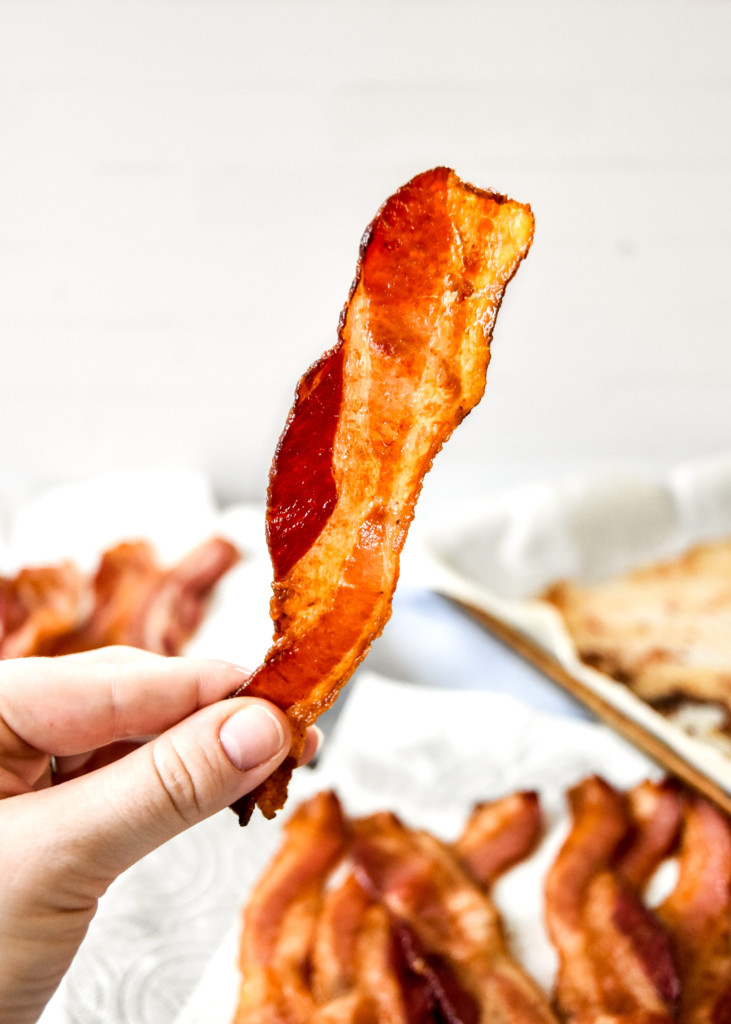
General tips for cooking bacon in the oven:
Here are some general tips and things to remember for how to cook bacon in the oven:
- Thickness and temperature of the bacon will affect cook time. Thicker, colder bacon will take longer to cook than thinner, room temperature bacon.
- How quickly your oven heats and what exact temperature it cooks at will affect cook time. All ovens vary and some run hotter than others, so it’s important to watch your bacon towards the end to get it cooked exactly the way you want.
- Using quality ingredients will give you a higher quality end product. This means the better quality your bacon is, the better it will taste no matter what method you cook it. Thicker, sturdier parchment paper also makes a difference with this method.
- This method recommends starting your bacon in a cold oven, which helps the bacon cook slower and more evenly. If your oven is already warm, you will need to reduce the cook time by several minutes, let your oven cool first, or follow a different recipe.
- To offset expensive bacon costs, save and use the rendered bacon fat. My method of cooking bacon makes it super easy to save the bacon fat that has collected while cooking the bacon. Use it for cooking anything from eggs to sautéing veggies.
What kind of bacon do you prefer?
I prefer to use the high quality bacon from my ButcherBox (affiliate link!) meat delivery service. This bacon comes from heritage breed pigs, which means humane treatment and permanent access to outdoor environments.
The bacon is also uncured and free of nitrates. I prefer bacon with no sugar added, because high quality bacon doesn’t need sugar in my opinion. BUT, most bacon from the store does container sugar, and that’s okay too.
I had actually run out of my favorite bacon when specifically testing for this post, so I bought two different kinds of bacon from the store to test other kinds and thicknesses.
In general, I prefer thinner bacon, but instructions and method for both are included!
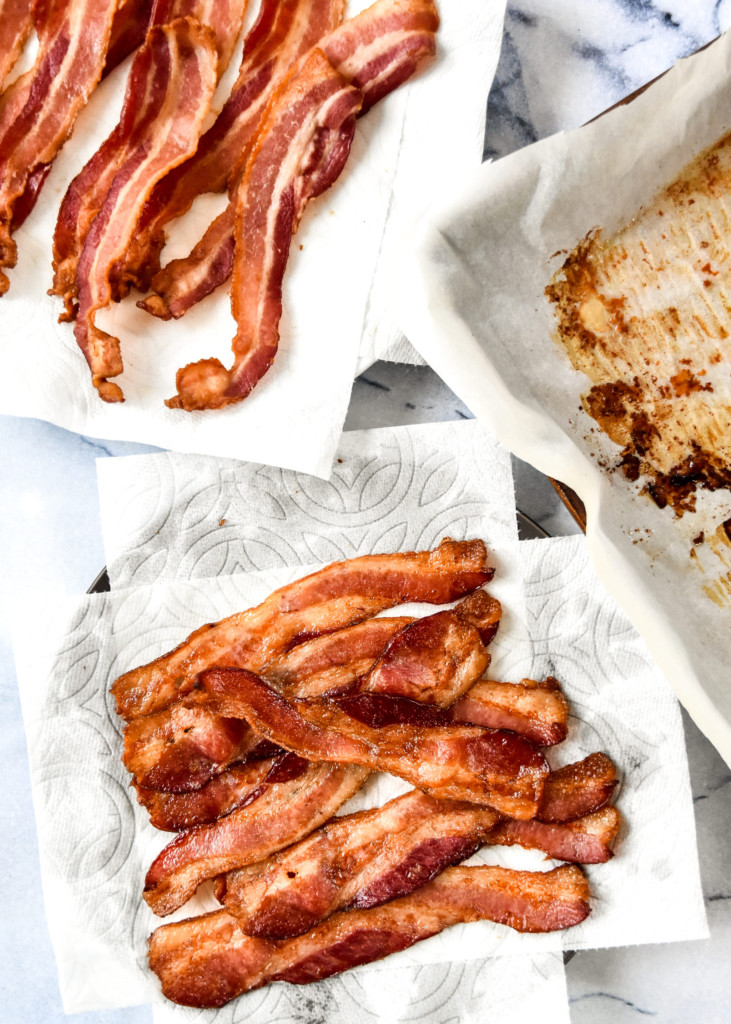
What are some ways to use cooked bacon?
There are tons and tons of ways to use up cooked bacon for any meal of the day (or even a snack!).
You can start by eating a piece of bacon with a couple hard boiled eggs in the morning – classic combo! Put the bacon on a breakfast sandwich or chop it up and add to a quiche. Just a couple examples!
I also love to add cooked bacon to turkey sandwiches or on burgers. For dinner, it can be chopped up and added to casseroles, soups or salads.

If you search ‘bacon’ here on Project Meal Plan, several recipes come up, and you can use this bacon in any of them!
How to save rendered bacon fat:
If you follow my recommended setup for cooking, you will be left with a parchment paper lined baking sheet that has several tablespoons of rendered bacon fat.
The amount of fat leftover will depend on the brand and type of bacon you cook. Center cut bacon will have less fat than regular bacon.
First, let the fat cool on the sheet pan for several minutes. It will thicken as it cools, making it easier to maneuver into a jar.
To save this bacon fat, carefully lift the parchment paper from the baking sheet and use the paper to funnel the grease into a mason jar or small bowl with lid.
Some people choose to strain this fat – I don’t think it’s necessary. Any bacon pieces will fall to the bottom of the jar and you can simply avoid them later when grabbing some grease for cooking.
Store this sealed jar of bacon grease in the fridge for up to 6 months.
If you do not wish to use the bacon fat, simply let the fat cool to room temperature and it will solidify, making cleanup even easier.
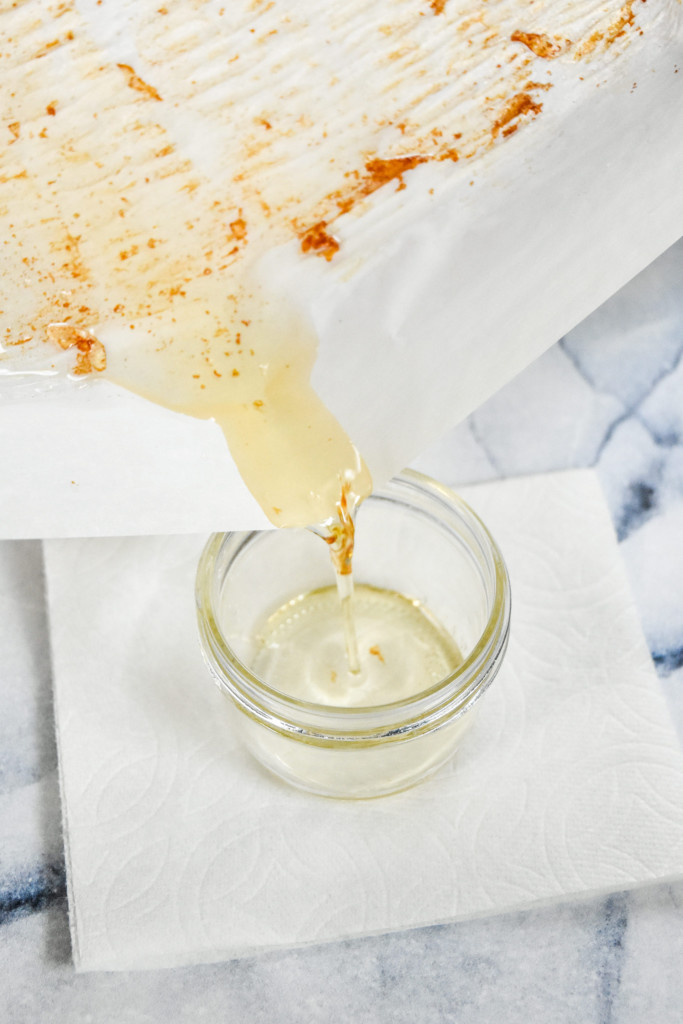
Why save bacon fat? What’s it good for?
If you’ve used a high quality bacon, this rendered bacon fat is perfectly good for cooking! In fact, it can really add some good flavor to eggs or veggies. Simply replace the cooking oil or butter with bacon grease.
I most often use this bacon fat for cooking scrambled eggs in a nonstick pan.
Using the rendered fat from cooking bacon is a really good way to justify spending a little more money on high quality bacon and reduce your food waste! The grease from one pack of bacon can replace several tablespoons of butter or oil.
How to make homemade bacon bits:
With this method of cooking bacon, it’s very easy to turn the cooked bacon into homemade bacon bits. For crisper bits, add a couple minutes to the cook time. For chopped bacon, simply cook as normal.
Chop up the bacon using a sharp chef’s knife (I love my Misen Chef’s Knife (affiliate link!)) on a cutting board into whatever size pieces you need for your recipe. I very much prefer homemade bacon bits to the store brand! Read more in my post on How to Make Homemade Bacon Bits!
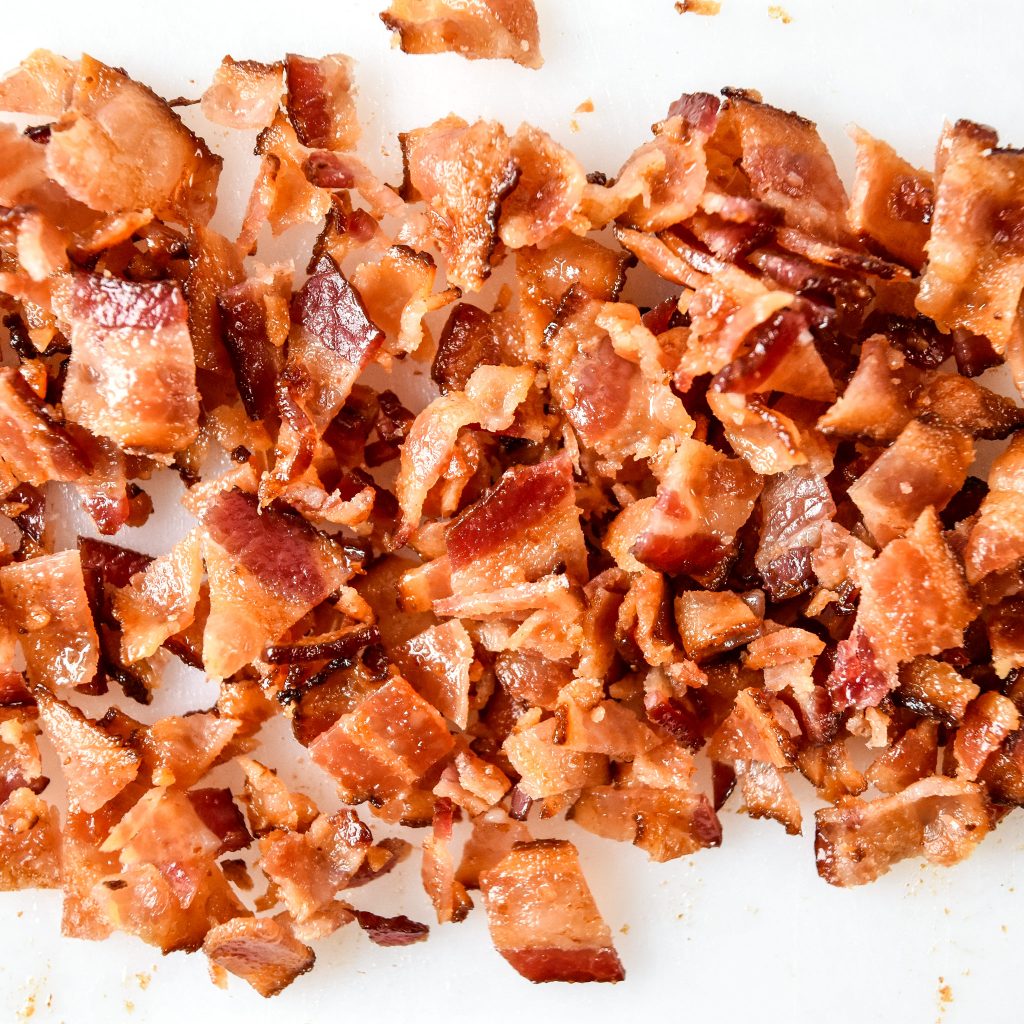
How to store cooked bacon:
Place cooked bacon into an airtight container or reusable silicone bag, along with a paper towel to continue soaking any grease, into the fridge for up to 3-5 days.
How to freeze bacon:
Raw bacon can be frozen in the original package for several months or a new airtight container for 3-6 months.
Store cooked bacon in an airtight container in the freezer for up to 3 months. You can also chop the bacon into bacon bits and freeze in cubes. Bacon can also be added to other freezer-friendly meals and will freeze well.
How to reheat cooked bacon:
My method of reheat depends on how I’m planning to use the bacon:
- To reheat and crisp strips of bacon, place into a hot 375F oven for 2-4 minutes or air fry at 350F for 2 minutes. Bacon can also be eaten cold from the fridge to save time.
- For a toasted sandwich or burger, I will add the cooked cold bacon under the cheese and cook as normal. The bacon will heat as the cheese melts.
- Chop up the bacon and add it to soups, salads, or casseroles. I’ve found for these types of recipes, it’s not necessary to reheat the bacon because it will heat up with the rest of the dish.
Email Me This Recipe
Email this recipe to yourself to save it in your inbox! Plus, enjoy weekly emails with tons of recipe inspiration. Opt out anytime.
Did you make this? I want to see how it turned out! Tag me in your social media post @projectmealplan and use #projectmealplan when you share!
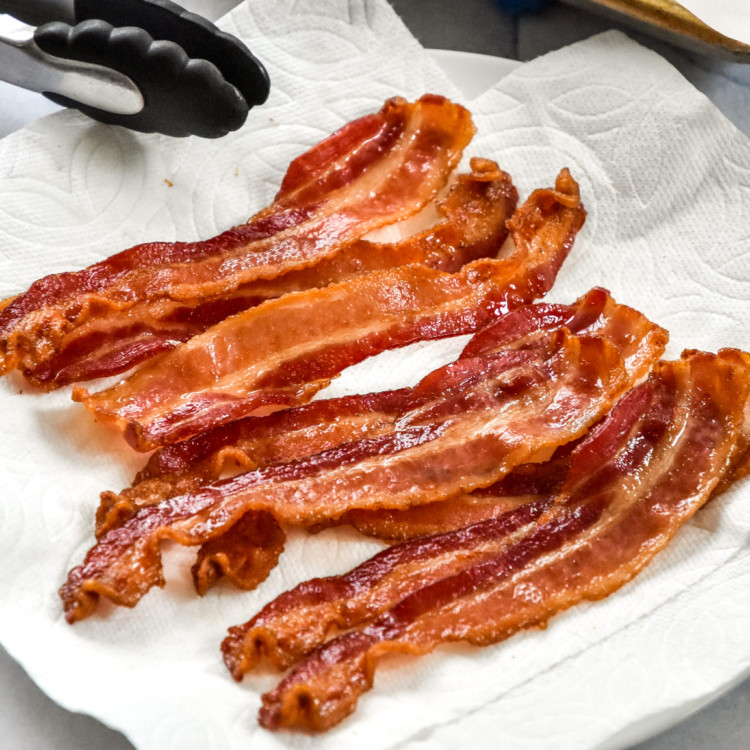
How to Cook Bacon in the Oven
The best way to cook bacon is to bake it in the oven! No splatter, no smoke, no pre-heating, and no headaches. Learn How to Cook Bacon in the Oven with my easy, mess-free method, plus how and why to save bacon fat!
Ingredients
- 8 ounces (8–10 strips) high quality bacon (center-cut or regular)
- other equipment: rimmed half sheet pan, parchment paper, paper towels
Instructions
- Prepare dishes: Line a rimmed half sheet pan (affiliate link!) with parchment paper. Measure the paper to be slightly longer than the pan. This will help keep all the grease contained and reduce mess. Additionally, line a large plate with two layers of paper towels.
- Arrange the bacon: Place 8-10 strips of raw bacon flat on the parchment lined sheet pan. The bacon strips can be touching, but not overlapping. The bacon will shrink considerably while cooking.
- Cook the bacon: Place the pan into a cold oven and immediately set the temperature to 375F. Set a timer for the cook time depending on the thickness of the bacon. Thinner bacon will take 18-23 minutes. Thicker bacon will take 24-28 minutes. If you prefer crisper bacon, add another 2 minutes. Start with minimum cook times and watch carefully from there. All ovens vary slightly so it’s important to watch the bacon carefully towards the end. Remove the bacon from the oven when it is browned, sizzling, and appears crisp to your liking.
- Plate the bacon: After removing the bacon from the oven, wait about 30 seconds for the sizzling to calm down. Use a fork or tongs to remove the bacon from the pan and onto the paper towel-lined plate. Use another paper towel to dab the bacon to remove additional grease – this helps the bacon crisp up nicely. The key is not to let the bacon sit in the grease after it comes out of the oven.
- Serve & store: Let the bacon cool for at least 5 minutes (it will crisp as it cools), and then serve or use in a recipe as needed. Store in a sealed container in the fridge and use on sandwiches, salads or soups for up to 3-5 days.
- Save the fat (optional): To save the bacon fat, first let it cool for several minutes to thicken. Carefully lift the parchment paper from the baking sheet and use the paper to funnel the grease into a mason jar or small bowl with lid (photo in post above). Strain if you wish (not required). Store this sealed jar of bacon grease in the fridge for up to 6 months.
Notes
Nutrition information is estimated and will vary depending on your brand and cut of bacon.
Nutrition Information
- Serving Size: 1 strip of bacon
- Calories: 60
- Fat: 5g
- Carbohydrates: 1g
- Protein: 3g

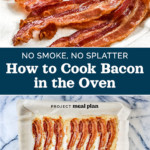
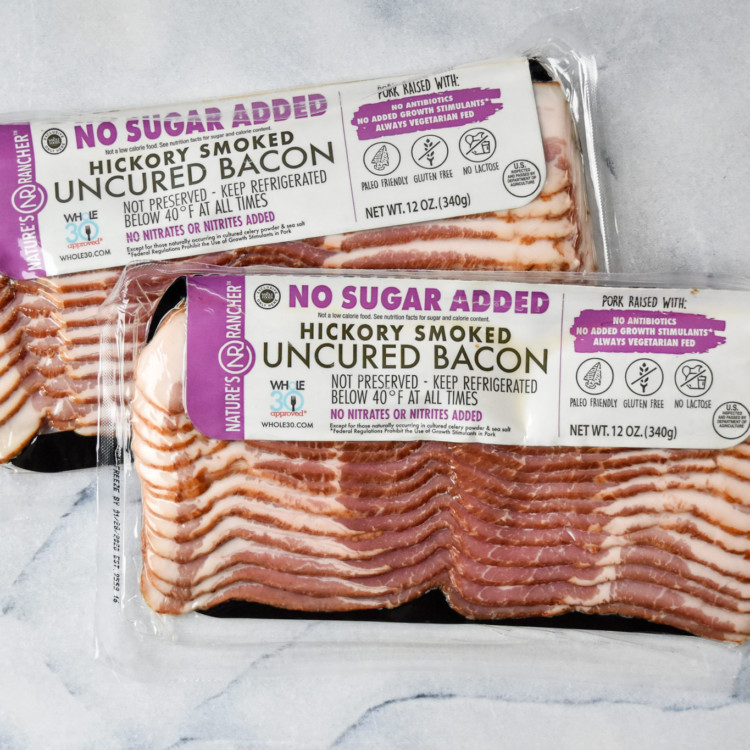
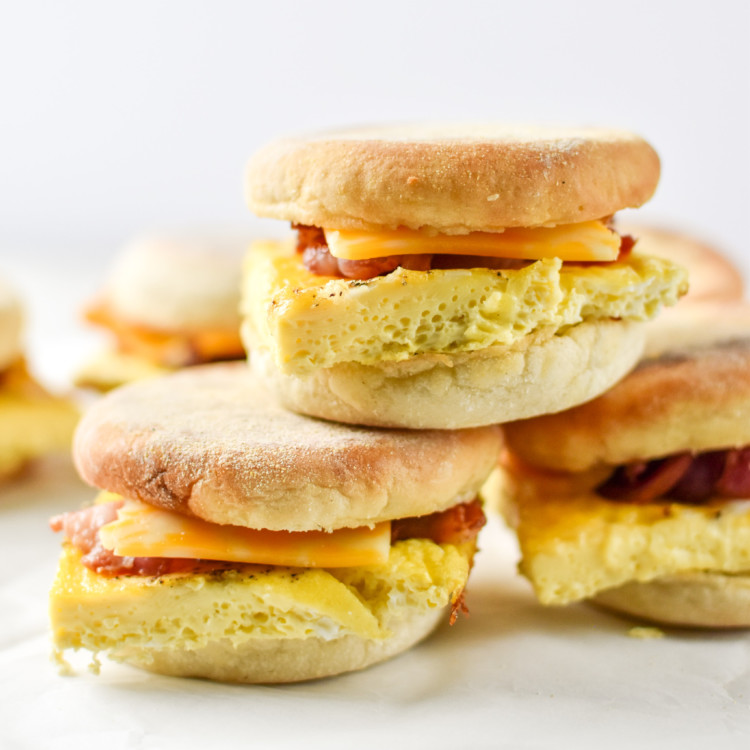
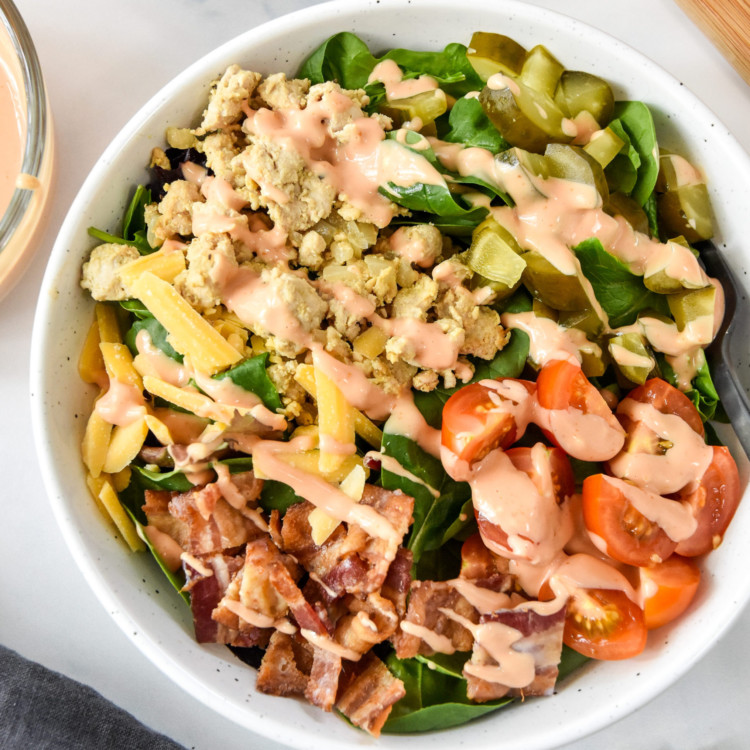

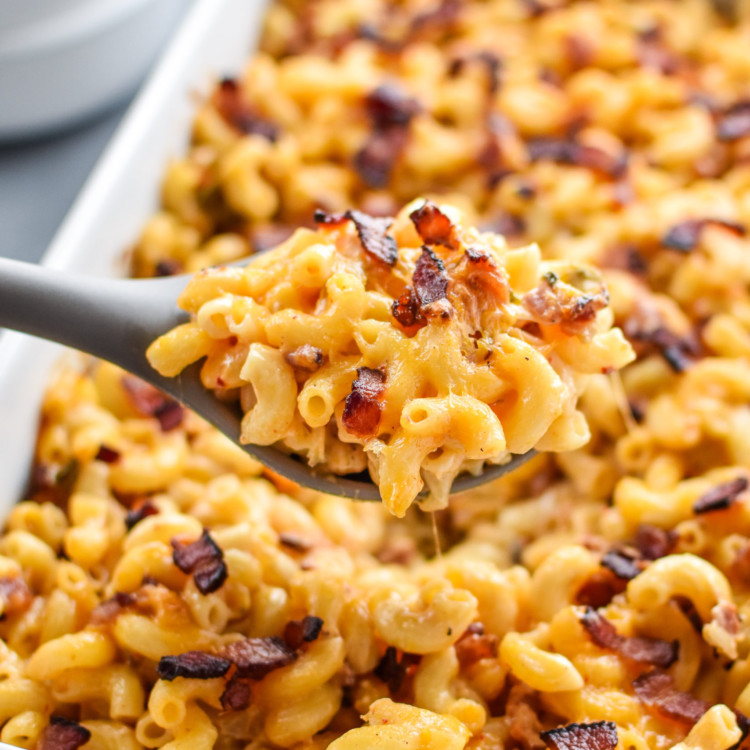

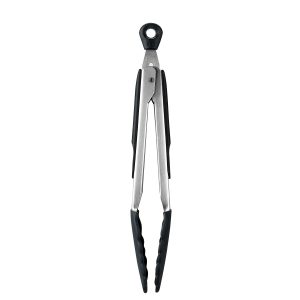
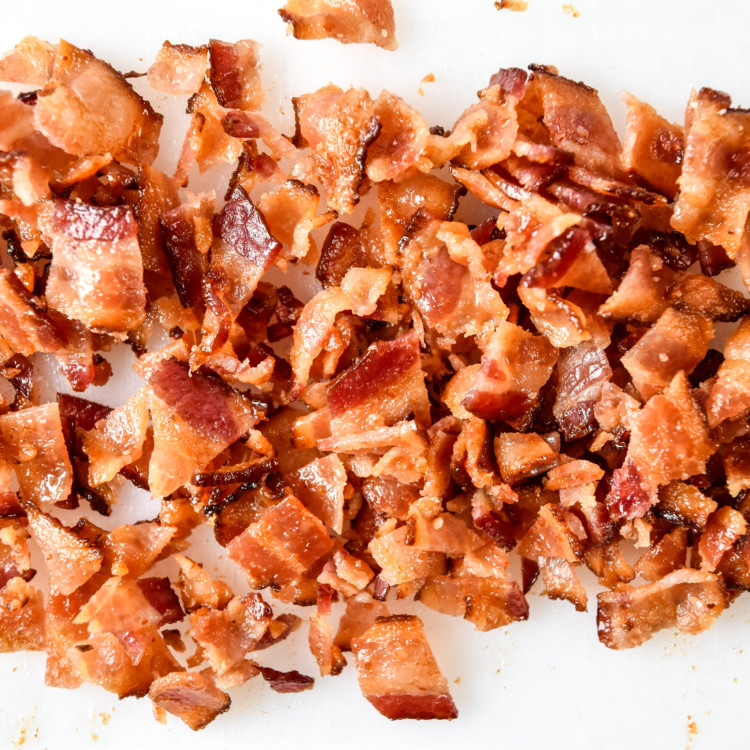
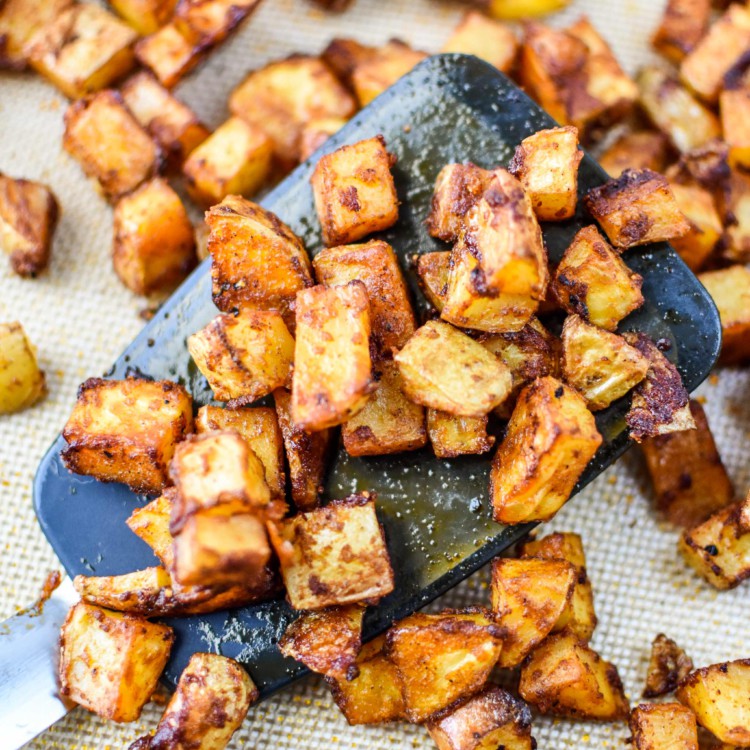
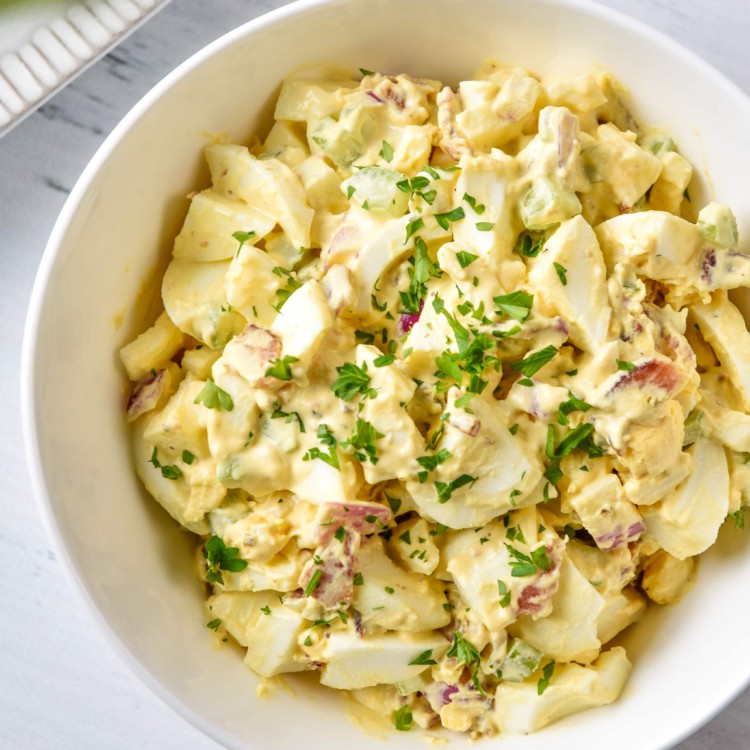
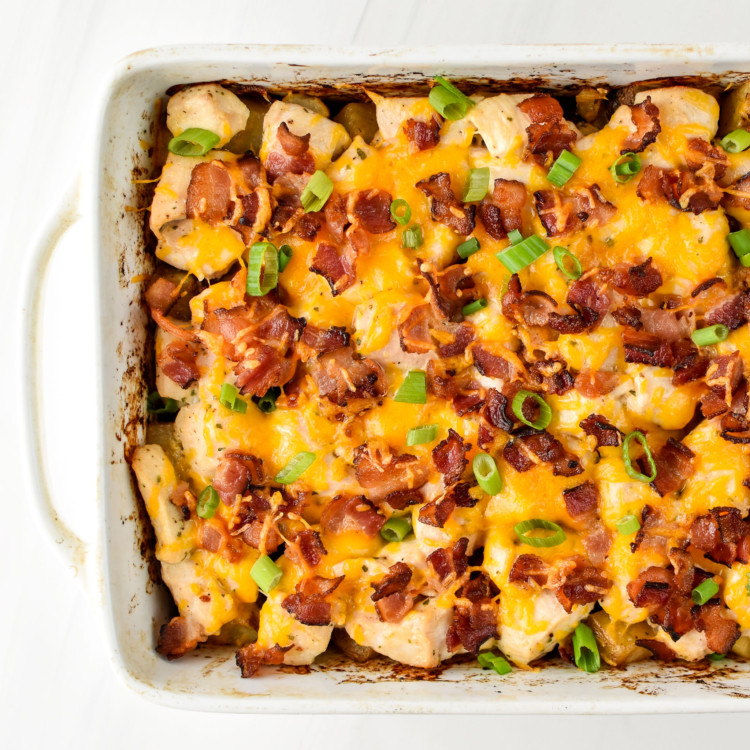
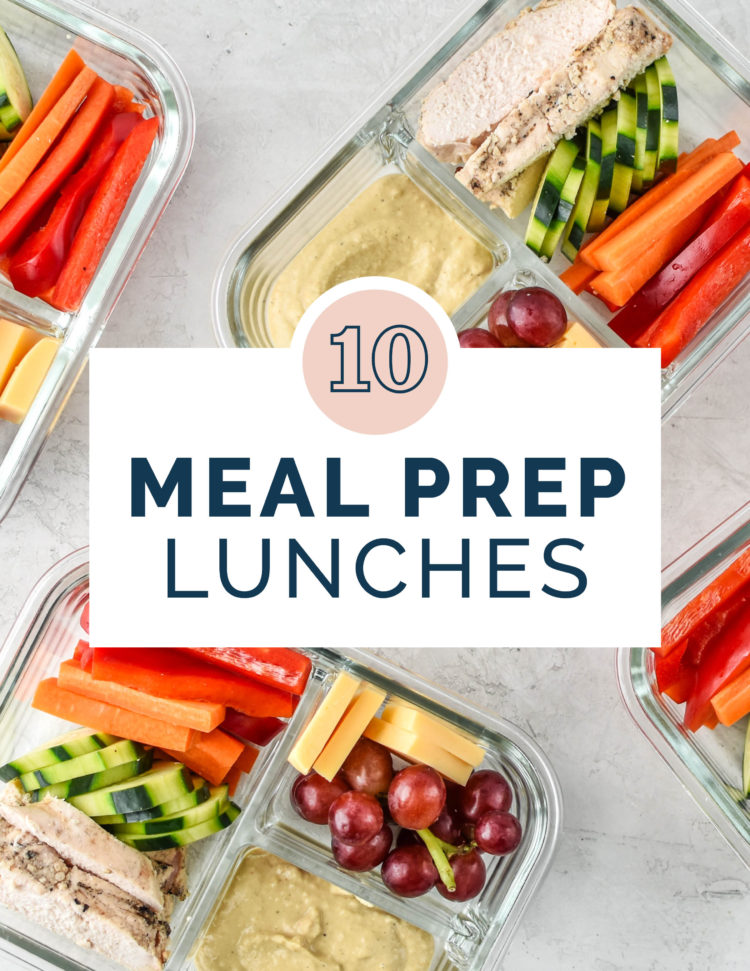
Leave a Comment